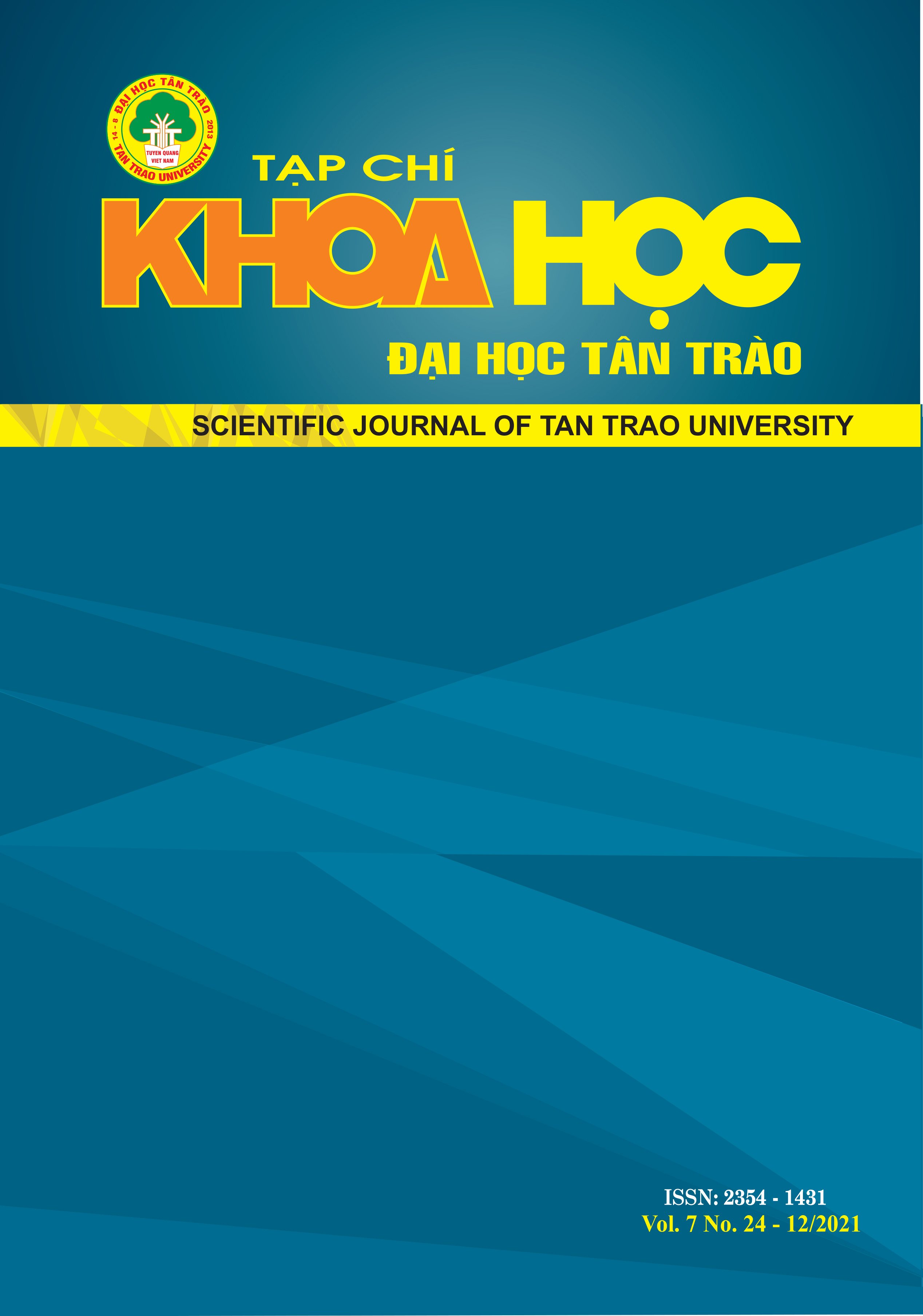VĂN HÓA DÒNG HỌ NGƯỜI VIỆT: TRƯỜNG HỢP HỌ TRẦN THẾ KỶ XIII - XIV
DOI:
https://doi.org/10.51453/2354-1431/2021/688Từ khóa:
Dòng há», văn hóa dòng há», nhà TrầnTóm tắt
Do xuất phát từ nền văn hóa gốc nông nghiệp nên môt đặc điểm văn hóa quan trọng của người Việt là tính cộng đồng cao trong tổ chức đời sống xã hội. Tính cộng đồng này được biểu hiện rõ qua vai trò của các dòng họ đối với các làng quê Việt Nam cũng như đất nước trong suốt chiều dài lịch sử. Lịch sử của dân tộc Việt Nam suy cho cùng cũng là lịch sử của các dòng họ. Dòng họ của người Việt đã tạo lên những giá trị văn hóa độc đáo cho nền văn hóa dân tộc. Bài viết của tác giả trên cơ sở phân tích những đăc trưng văn hóa của dòng họ Trần thế kỷ XIII-XIV qua đó góp phần vào việc kiến giải vai trò của văn hóa dòng họ đối với nền văn hóa dân tộc.
Tải xuống
Tài liệu tham khảo
[1] Am, T.D. (2011), Vietnamese family line culture, Culture - Information Publishing House, Hanoi.
[2] Bang, V.V. (2007), Confucianism and family line culture, Social Science Publishing House, Hanoi.
[3] Chi, T.N. (2003), Contributing to the study of culture and ethnic groups, Ethnic Culture Publishing House, Hanoi.
[4] Doan, D.P. (2003), Some economic issues in Vietnamese villages and communes, Culture - Information
Publishing House, Hanoi.
[5] Leopol Cadiere. (2006), Culture, religion and belief in Vietnam, General Publishing House, Hanoi.
[6] Giang, P. (2014), Taking the people as the root under the Tran dynasty, No.1 Party Building Magazine 2014.
[7] Giu, H.C. (translator), Anh, D.D. (editor). (2009), Dai Viet history book, Literature Publishing House, Hanoi.
[8] Ninh, L. (2000), Simplified Vietnamese History - Chapter V, National Political Publishing House, Hanoi.
[9] Quan, V.V. (2019), Tran Dynasty 1226-1400, Hanoi Publishing House, Hanoi.
[10] Quynh, H.T. (2010), General history of Vietnam, Education Publishing House, Hanoi.
Tải xuống
Đã Xuất bản
Cách trích dẫn
Số
Chuyên mục
Giấy phép

Tác phẩm này được cấp phép theo Giấy phép Quốc tế Creative Commons Attribution-ShareAlike 4.0 .
Bài báo được xuất bản ở Tạp chí Khoa học Đại học Tân Trào được cấp phép theo giấy phép Ghi công - Chia sẻ tương tự 4.0 Quốc tế (CC BY-SA). Theo đó, các tác giả khác có thể sao chép, chuyển đổi hay phân phối lại các bài báo này với mục đích hợp pháp trên mọi phương tiện, với điều kiện họ trích dẫn tác giả, Tạp chí Khoa học Đại học Tân Trào và đường link đến bản quyền; nêu rõ các thay đổi đã thực hiện và các nghiên cứu đăng lại được tiến hành theo cùng một bản quyền.
Bản quyền bài báo thuộc về các tác giả, không hạn chế số lượng. Tạp chí Khoa học Tân Trào được cấp giấy phép không độc quyền để xuất bản bài báo với tư cách nhà xuất bản nguồn, kèm theo quyền thương mại để in các bài báo cung cấp cho các thư viện và cá nhân.
Mặc dù các điều khoản của giấy phép CC BY-SA không dành cho các tác giả (với tư cách là người giữ bản quyền của bài báo, họ không bị hạn chế về quyền hạn), khi gửi bài tới Tạp chí Khoa học Đại học Tân Trào, tác giả cần đáp ứng quyền của độc giả, và cần cấp quyền cho bên thứ 3 sử dụng bài báo của họ trong phạm vi của giấy phép.






